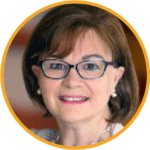INTERACTIVE FEATURES: When viewing this article on an electronic device, note that web addresses are live links. Just click the link to visit that web page.
Click for instructions for moving the PDF into Kindle, Nook, Apple iBooks, and Apple Library.
Don’t Miss Additional Easy-to-Access Links In This Article and Other Resources to Learn More
What Referring Hospitals, ACOs, and Physicians Want from Home Health, Hospice, Palliative Care and Private Duty to Make Their Lives Easier
Your Referral Sources Top Four Frustrations
Your referral sources are the lifeblood of your organization. Ultimately, they will look for relationships with organizations that are easy to work with and that can deliver proven quality care.
A new research study reveals a significant gap between what referring providers want, and what care at home providers are prepared to deliver.
Do You Know the Top Four Frustrations Among Referring Physicians When Working With Care in the Home Providers?
Here’s what physicians say frustrate them most:
- 40% – Phone calls and phone tag. Back and forth phone calls cause dissatisfaction among patients and providers.
- 22% – Inability for referring providers to see how their patients are progressing.
- 16% – Inability to perform initial service in a timeline acceptable to the referral source.
- 10% – Lack of knowledge about which payers are accepted by post-acute provider networks.
Why Would a Referral Source Choose Another Provider? Is Your Organization Losing Referrals?
A staggering 74% of referring physicians say they would switch to a new care at home provider if that organization was able to accept electronic referrals and interoperate with them effectively.
New research reveals a significant gap between what your referral sources want and what home health, hospice, palliative care, and private duty are prepared to deliver when it comes to communications and interoperability.
- 36% of home health and hospice organizations still use fax machines to receive referrals.
- 20% report that phone calls are the primary means of referral receipt.
- Only 4% of care at home providers are using interoperability through technology like an Electronic Record (EMR) system to process orders today.
Here is a simple fact:
- 74% of referring physicians have said they would switch to a new care at home provider if that organization was able to accept electronic referrals and interoperate with them effectively.
How are Your Peers Growing Referrals? How are They Building Stronger Relationships?
A roundtable of your peers shares how they are growing referrals and building strong relationships with their referral partners.

Sarah Kivett, BSN, RN, OCN, CHPN
Director of Palliative Care
Iredell County Hospice and Palliative Care
Interoperability has been key in helping her organization achieve its goals, starting with good relationships with community hospitals and providers.
“We believe that our growth in our palliative care department really does come down to relationships, and communication back to our referral sources. This has been a real focus for us, as our current palliative care census is a little over 400, and this past year we became the primary referral source for our hospice service line. We do believe that this has to do with the relationship building that we have done with our primary care physicians, but also the communication piece. I can’t really stress that enough.
“Having that ease of communication with the referral sources, whether that’s with e-referrals coming directly to us, or whether that is our direct messaging through our EMR back to the physicians (all scripts particularly), we are able to communicate within 24 hours or less.
“This communication has been imperative as we try to get our plans of care to be very concise and know what the goals of care for that patient really are. With our hospice not having to wait on paper faxes and doing phone tag with patients that are ready to transition into hospice, our referral sources can do the e-referrals.
“This is helping us to shorten our order to start-up care time, which our goal in hospice is same-day admission, if at all possible. Interoperability has really allowed us to be much more efficient, much timelier, and our communication much more thorough.
“We have also worked very hard to decrease our patients’ hospital encounters, and we have done this by about 30% over this past year. CommonWell has helped us with that.”

Darcie Peacock,BSW, MS, OTR/L)
CEO and Administrator
Solace Pediatric Home Healthcare
“We had a big breakthrough with one of the larger hospital systems in our market, and we found that they’re just truly looking for that actual partner. Their big concern was when we give you this patient, how will we know what’s going on, how things are working, how will you know what goals we were working to address?
“So just sharing that we can connect right to their system, we’ve got these notes, we are able to look at a patient that we share currently, and what we already have available to us.
“There were a lot of great selling points that we had for this partnership, but that one really pushed us over the top of the competition. From their angle, it was looking at, how do we do all of this and not add overhead and more manual processes? We were able to solve that and ensure that we were already doing it.

Janelle Solomon
Director of Compliance
Sangre de Cristo Community Care
“The most important thing we do (and learned) is make sure we all understand each other’s lingo, and sometimes that difficulty just boils down to making our systems or making our software – come together, even though we’re not talking that same language.
“That really helped us when we thought something was just a brick wall, and we couldn’t utilize interoperability with one of our particular referral sources. Come to find out, as soon as we changed up the language, we were talking about the same thing, and we were able to break down that barrier and find a solution with a very minor workaround. Our will to have that conversation and to keep pushing for interoperability, even though we faced a small challenge, allowed us to find the solution.

Denise Schrader, MSN, RN, NEA-BC
Vice President for Integrated Services
Mosaic Life Care
“The ability to have – at our fingertips – patient information from our hospital, our clinics, our specialty clinics, and other outside providers, is critical in our success, especially as we face the challenge of billing every 30 days. In the past, in our intake process, you’d have the phone call exchanges, you’d play phone tag with your physicians, or your hospitals, or your care managers.”
“Now we’re able to hit a button in our clinical record and push our information to the hospitals and the clinics. In addition, we’re able to pull the clinical information into our records. In other words, we have more efficient, and in addition, we have more complete and more accurate patient information.”
The Future of Interoperability
Today’s technology keeps you connected with providers, but what’s next? By staying up to date on the latest technologies, your organization will be ready to evolve when the time comes.
In most areas of health information technology, interoperability is evolving at a rapid pace. Agencies are adopting similar standards of collecting, sending, and receiving information– allowing seamless communication. But the future holds more. Over the next few years, home health and hospice experts will expand the use of this information, and advance EHR technology so that learning, prediction, and prevention all become part of a smart healthcare system.
To gain further insight into your referrals and their thoughts, click here.
Three Strategies to Differentiate Your Business and Build Better Communications with Referral Partners
Interoperability doesn’t just better connect you with providers, it also makes you a trusted organization for patients and their extended families.
Provider organizations share similar goals and quality standards with the rest of the healthcare ecosystem, but how they communicate (or don’t communicate) key information can be very different. That paradigm is changing because connected organizations are the future.
- Strengthen your referral relationships by evaluating your interoperability capabilities.
Embracing interoperability isn’t an option – it’s imperative for entities that want to stay competitive and relevant. In these challenging times, connectivity is what your organization will need to survive. That’s because referral sources will have to make a choice. Ultimately, they will look for relationships with organizations that are easy to work with and that can deliver proven quality care.
Without interoperability, home health and hospice are a disconnected industry and that results in incomplete care, incorrect reports, and the inability to efficiently receive care details from providers. There are also limited options or abilities to provide updates, assessment findings, and trends to providers. Interoperability allows organizations to grow into more accountable care – and a more connected future.
- Create an easier way to communicate and exchange information with your referral partners.
The ability to exchange data between providers enables information to follow the patient and foster better care transitions. This is interoperability, and it has the power to make data accessible anywhere, any time.
Being able to accept client data and being able to share important client progress notes directly with referrals can be a big differentiator for your organization.
The right technology will communicate timely, automated, thorough, and accurate– ensuring that your organization runs efficiently and is top of mind when referral sources consider trusted partners in care delivery.
- Keep your referral sources informed about their patients.
Your referral partners increasingly expect robust interoperability to make patient transfers as seamless as possible, for both the patient and providers.
Smart organizations are leveraging technology to power successful post-acute care programs knowing that information exchange is critical to maintaining patient care. Interoperability facilitates smoother care coordination between various care settings and teams. By leveraging technology, you can link referral sources and all care providers so they can interact and gain insight into the patient’s current state of health.
MatrixCare provides software solutions in out-of-hospital care settings. As the multiyear winner of the Best in KLAS award for Long-Term Care Software and Home Health and Hospice EMR, MatrixCare is trusted by thousands of facility-based and home-based care organizations to improve provider efficiencies and promote a better quality of life for the people they serve. As an industry leader in interoperability, MatrixCare helps providers connect and collaborate across the care continuum to optimize outcomes and successfully manage risk in out-of-hospital care delivery. MatrixCare is a wholly owned subsidiary of ResMed (NYSE: RMD, ASX: RMD). To learn more, visit matrixcare.com and follow @MatrixCare on Twitter.


